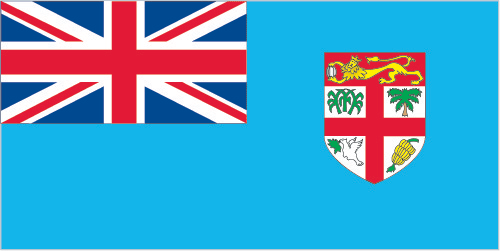Last updated on May 12th, 2021
Fiji, officially the Republic of Fiji, is an island country in the South Pacific Ocean. It has an area of 18,274 square km. Suva is its capital and largest city. English, Fijian, and Hindi, are the official languages of Fiji. Fijian dollar is its official currency.
The Fiji Republic is actually not just one beautiful island but an archipelago of some 333 islands and over 500 islets. Only 110 of them are inhabited and all of them are beautiful combinations of volcanic mountain ranges, rainforests, and gorgeous sandy beaches. Read on to discover some interesting facts about Fiji.
Facts about tourism in Fiji
1. Fiji’s main sources of foreign exchange are sugar exports and its thriving tourist industry, which along with its abundance of minerals, fish, and forests, gives it one of the most developed economies in the Pacific.
2. The first word in the native Fijian language you’ll need to learn is Bula, which means “hello”, because you will hear it everywhere. These friendly people will also greet you in English, which almost all of the population speaks as well.
3. Those who enjoy outdoor adventures will find great walks and hikes in the Sigatoka Sand Dunes National Park, the sandy Natadola Beach, or the Lavana Coastal walk from the beach to the waterfall. There are also several zip line opportunities available.
Flag of Fiji

4. Hire a boat to spend the day on the water diving in the Great Astrolabe Reef coral reefs and snorkling along the beaches.
5. Take the kids to the Big Bula Water Park or hike to one of the waterfalls or caves on the islands.
6. Be sure to visit the Kula Eco Park where you can feed young sea turtles and hold iguanas and young snakes. Don’t be afraid to handle them; there are no venomous snakes in the Fiji Islands.
7. Accommodations range from luxury hotels on the beach to hostels for backpackers that run an economical $8 to $15 per night.
8. Fire walking originated on the islands around 500 years ago but today the ceremony is usually practiced as cultural shows that appeal to tourists.
9. Visit the Garden of the Sleeping Giant to see the orchids or experience the Sabeto Hot Springs and Mud Pool in Nadi.
10. Fijian girls learn how to craft pottery as well as weave baskets and mats while boys learn to carve kava bowls, war clubs, spears, and the always-popular wooden forks that are sold to tourists as relics of Fiji’s days of cannibalism.
Historical Facts of Fiji
11. The original settlers of Fiji, who came to the islands over 5000 years ago, are now called the Lapita people but were originally Melanesians and Polynesians.
12. Fiji’s first settlements were started by voyaging traders and the first Europeans to land and live among the native population were shipwrecked sailors.
13. Fijians were formidable warriors who built some of the finest boats in the Pacific in their day and time. They called their home Viti but nearby island Tonga called it Fisi. Captain James Cook was the first to pronounce it as Fiji and his writings promulgated that name.
14. Fijians were also fierce cannibals who were known for their practice of eating their enemies and making human sacrifices. The ferocity of their lifestyle deterred European sailors from going anywhere near their coastal waters. Fijians now regard those years as “na gauna ni tevoro” (the time of the devil).
15. With the arrival of Christian missionaries, cannibalism began to wane. The last known victim was himself a missionary. Thomas Baker made the mistake of accidentally touching the head of the village chief, an insult tantamount to a declaration of war.
16. The Dutch and British began to explore the islands in the 17th and 18th centuries. In 1874 the British subjugated Fiji as a colony and began the large scale cultivation of sugar cane there in the 1880s.
17. In order not to interfere with the Fijians’ native way of life, contract labor from India was brought in to work in the sugar plantations. More than 60,000 indented workers arrived before the practice ended in 1920. Later these Indian transplants would lead to conflicts in the islands’ government.
18. After 96 years of British rule, Fiji became independent in 1970 but remained part of the British Commonwealth.
19. In 1987, a military dictatorship took over the country to prevent an Indian-dominated party from controlling the government. This triggered a larger exodus of Fijians of Indian origin from the country. Today the population is 40 percent Indian.
20. Fiji continued to be controlled by one military coup after another until a democratic election was finally held in September of 2014.
. . . continue reading on the next page.
